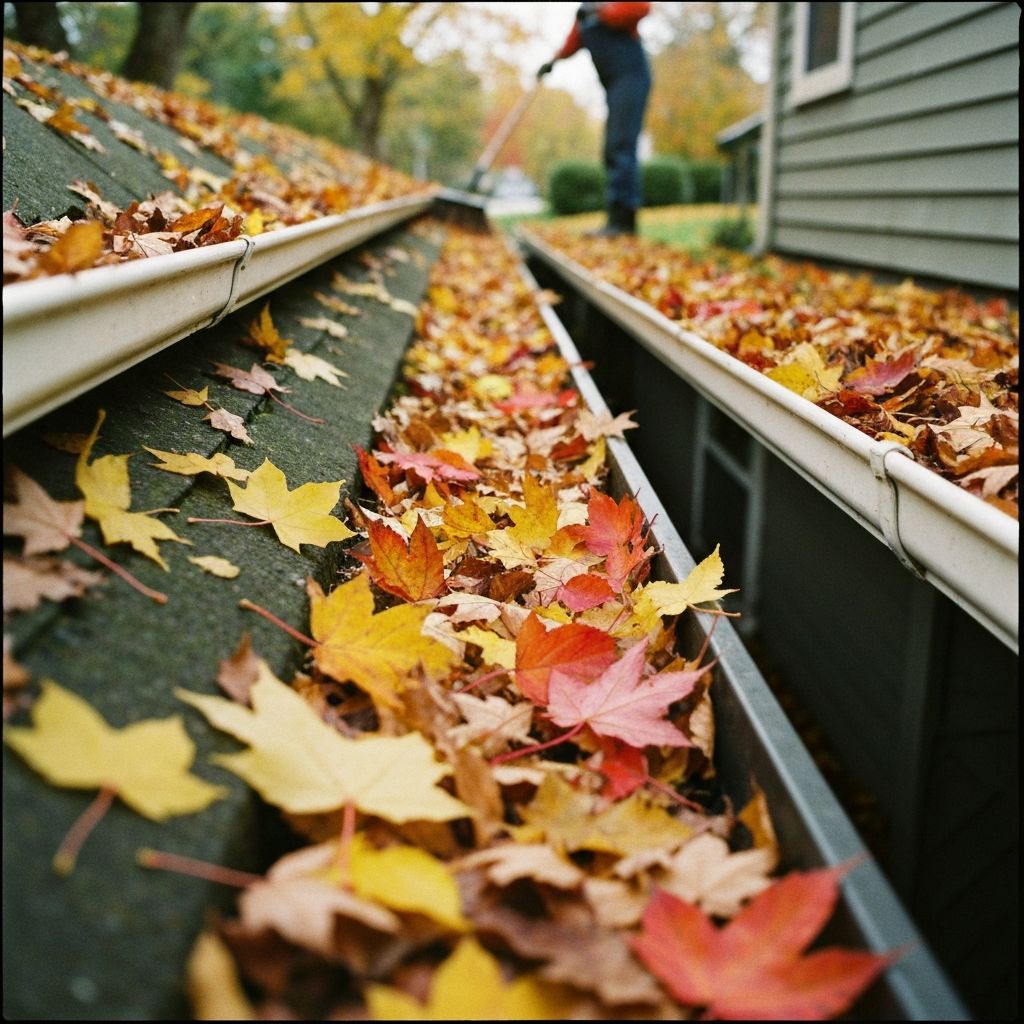
How Seattle's Rain Affects Your Gutter System
Sarah Chen
July 30, 2024 · 6 min read
"It rains so much in Seattle — your gutters must overflow constantly!"
Actually, Seattle ranks only 44th nationally for total rainfall (37 inches annually vs. Houston's 54 inches or Miami's 62 inches). But our rain is different: steady, moderate intensity spread over 150+ days per year rather than intense storms.
This unique pattern — combined with Pacific Northwest humidity, freeze-thaw cycles, and heavy tree debris — affects gutter systems in ways most contractors don't understand unless they work exclusively in this region.
This guide explains how Seattle's climate impacts your gutters and what you need to know to keep your system functioning optimally.
Seattle's Unique Rain Pattern
The Numbers
Annual totals:
- Seattle average: 37.5 inches
- Bellevue average: 35 inches
- Rainfall days per year: 150-160
- Hours of rain: 2,100+ annually
But here's what matters more:
Intensity: Moderate and steady (0.1-0.3 inches per hour typical) Duration: Hours or days of continuous drizzle Season: 75% of annual rain falls October-March
Comparison to other climates:
- Houston: Intense thunderstorms (1-3 inches/hour), brief duration
- Miami: Tropical downpours (2-4 inches/hour), afternoon storms
- Seattle: Gentle, persistent rain (0.1-0.3 inches/hour), all-day events
What This Means for Gutters
Standard gutter systems designed for:
- Brief intense storms
- Quick drainage
- Dry periods between rains
Seattle gutters must handle:
- Sustained flow for hours/days
- Continuous moisture exposure
- Minimal drying time between storms
- Extended wet season (7-8 months)
The challenge: Many "standard" residential gutters are undersized or improperly configured for Seattle's sustained rainfall pattern.
5 Ways Seattle Rain Stresses Gutter Systems
1. Sustained Flow Exposes Weak Points
In brief-storm climates:
- Gutters flow hard for 30-60 minutes
- Dry out between storms
- Weak seams don't show problems until they completely fail
In Seattle:
- Gutters flow for 4-8 hours continuously
- Stay wet for days
- Every weak seam, bad joint, or pitch error shows up as persistent leaks
Result: Seattle reveals gutter problems faster. A system that "works fine" in Phoenix fails in three years here.
2. Continuous Moisture Accelerates Corrosion
The rust equation: Moisture + oxygen + time = rust
Seattle multiplier:
- Gutters stay wet 60-70% of the year
- High humidity (even during "dry" summers)
- Morning dew keeps gutters damp overnight
- Organic debris stays wet (accelerates metal degradation)
What fails first:
- Steel gutters: Rust through in 8-12 years (vs. 15-20 elsewhere)
- Aluminum paint: Blisters and peels from constant moisture
- Fasteners: Rust and fail (especially old spike-and-ferrule systems)
- Caulked seams: Degrade 2x faster from UV + moisture cycling
Material selection matters: Aluminum resists rust far better than steel in Pacific Northwest climate.
3. Freeze-Thaw Cycles Damage Seams and Joints
Seattle winter reality:
- Temperatures fluctuate around freezing (25-40°F typical)
- Gutters hold water from rain/snow
- Water freezes overnight, thaws midday
- Repeat 20-40 times per winter
What happens:
- Water expands 9% when freezing
- Pressure stresses seams and joints
- Micro-cracks develop
- Spring rains reveal winter damage
4. High Humidity Promotes Moss and Algae Growth
Seattle's humidity:
- Annual average: 70-75%
- Winter average: 80-85%
- Even summer: 60-65%
Gutter impacts:
- Moss grows on wet aluminum surfaces
- Algae creates black streaks (exterior cosmetic issue)
- Organic growth holds moisture against metal
- Accelerates paint degradation and metal fatigue
5. Tree Debris Compounds Moisture Problems
Seattle's urban forest:
- 30% tree canopy citywide
- Common species: Douglas Fir, Western Red Cedar, Big Leaf Maple, Alder
- Year-round shedding (needles, leaves, twigs, seed pods)
The moisture multiplier:
- Debris accumulates in gutters
- Holds moisture like a sponge
- Creates constant wet environment
- Debris decomposes into acidic sludge
- Accelerates metal corrosion
Gutter Sizing for Seattle Rain
The Standard vs. The Reality
Standard residential sizing (national):
- 5-inch K-style gutters
- 1 downspout per 35-40 linear feet
- Based on brief, intense storms
Seattle-optimized sizing:
- 6-inch K-style for roofs >1,500 sq ft per downspout
- 1 downspout per 30-35 linear feet
- Calculated for sustained moderate flow
Material Selection for Pacific Northwest
Aluminum (Best Choice for Seattle)
Why it works here:
- Rust-resistant (critical for constant moisture)
- Lightweight (less stress on wet fascia boards)
- Cost-effective ($8-12 per foot installed)
- Available in seamless on-site forming
- 20-30 year lifespan in PNW climate
Copper (Premium Option)
Advantages:
- 50+ year lifespan
- Develops protective patina (green/brown aging)
- Extremely corrosion-resistant
- Upscale appearance
Steel (NOT Recommended for Seattle)
Why it fails here:
- Rusts aggressively in constant moisture
- Even galvanized steel corrodes within 10-15 years
- Requires frequent painting maintenance
- Heavy (stresses fascia)
Verdict: Avoid steel gutters in Greater Seattle
Conclusion
Seattle's climate — moderate steady rain over 150+ days, high humidity, freeze-thaw cycles, and constant tree debris — stresses gutter systems differently than most U.S. regions. Understanding these unique demands helps you choose the right materials (aluminum over steel), size appropriately (consider 6-inch for large roofs), maintain proper pitch, and schedule maintenance correctly.
Need a Seattle climate-optimized gutter system? KVP Gutters specializes in Pacific Northwest conditions with aluminum seamless gutters, proper sizing calculations, and regional maintenance recommendations.
Call (206) 660-9689 or email hello@kvpgutters.com for your free assessment.
Need Professional Gutter Services in Seattle?
KVP Gutters provides expert installation, repair, and maintenance services throughout the Seattle area. Get your free estimate today!